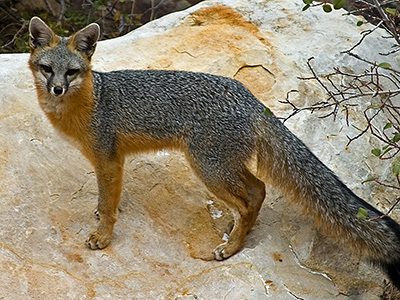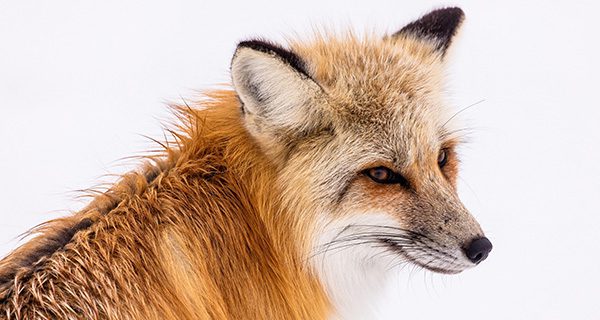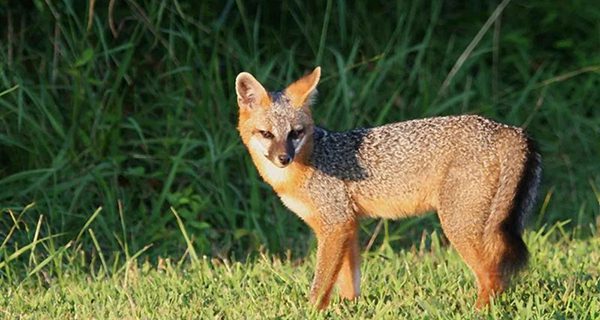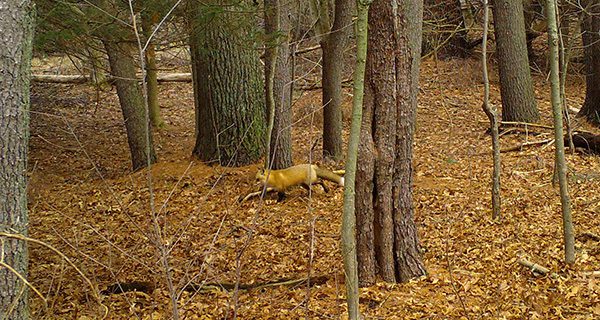[ccfic caption-text format="plaintext"]
By Lisa Moore
Hometown Weekly Correspondent
As winter’s icy grip keeps a stranglehold over the region, it is hard to imagine how the many animals that call Massachusetts home survive the winter months when food is scarce and temperatures plummet.
One such critter is the wily fox.
Two species of fox live and breed in Massachusetts, the red fox (vulpes vulpes) and the less common gray fox (urocyan cinereoarggenteus). Both breeds are members of the canidae family, along with wolves, coyotes, jackals and domestic dogs. These intelligent animals have carved a niche for themselves, allowing them to adapt to a wide variety of habitats and survive - and even thrive - alongside suburban sprawl.

February is mating season for both gray foxes (like this one) and red foxes. Photos courtesy of Wikimedia Commons
The gray fox is smaller than the red fox, and it has a shorter snout and more rounded face. Gray foxes are often mistaken for the more common red fox, as both will have some red and gray fur. While the two types of fox seem very similar, they are actually distant cousins, belonging to completely different genera in the family canidae.
One sure way to tell the red fox from the gray fox is by looking at their tail. In red foxes, the tip of the tail is white. In gray foxes, the tip of the tail is black. The characteristic fluffy tail or “brush” helps the fox stay warm in winter - it will be wrapped around the fox’s body and over its snout while curling up to sleep - and also aids with balance. It also serves, when raised, as a signal flag to warn other foxes of danger.
Red foxes are found throughout the continental United States from Alaska to Florida. These intelligent animals are solitary hunters with an omnivorous diet. They like to live in woodlands, wetlands, and meadows where they find their preferred food of rodents and rabbits. However, they are so adaptable and opportunistic they will also feed on fruit, fish, frogs, and even worms. They can live in rural and suburban neighborhoods, feeding from gardens and garbage cans, stalking bird feeders, and even consuming pet food for those that feed their pets outside.
Gray foxes are widespread through North and Central America. It was the most common fox in the eastern United States until human advancement and deforestation allowed the more adaptable red fox to take over as the dominant species. One adaptation of the gray fox is its ability to climb trees, a unique distinction among the canids. It uses strong hooked claws to scramble up trees to escape predators, such as coyotes and domestic dogs, or to reach a variety of food sources within the tree canopy. Gray foxes are able to jump from branch to branch, and usually descending the tree backwards in a manner similar to a domestic cat.
Foxes are usually nocturnal or crepuscular, making dens in hollow trees or other suitable burrows during the day and going out hunting at dusk and dawn.
Mid-January through February is the mating season for gray and red foxes. During these short few weeks, the female fox or vixen will only come into heat once. Being in heat or estrus is the time the female has a viable egg that can be fertilized by a male; for foxes, heat is short and lasts approximately three days. When the male and female fox begin courtship, they will stay together, hunt together, and find a suitable den. After the pair has mated, the gestation period is approximately 52 days. Red fox litters typically have between four and nine kits (the name given to baby fox), and gray fox litter is between one and seven kits. Fox families will stay together until the kits reach sexual maturity, then the males disperse far from their parents to find their own territory and a mate, while female foxes will disperse closer to the den. The fox den may be used at any time during the year, but mostly during whelping season, the time from birth to dispersal of the kits.

The dapper-looking red fox is one of two fox species that call Massachusetts home. Photo courtesy of publicdomainpictures.net
While foxes are omnivores, they are also smart and skillful hunters and will prey on almost any animal smaller than itself. However, the fox is not at the top of the food chain - several predators prey on them, such as coyote and owls. As human sprawl and habitat destruction cause more human-fox interactions, cars and domestic dogs also cull the fox population.
If you are fortunate to spot a fox, as with all wild animals, give it plenty of space, observing from a distance. They play an important role in the food web, keeping rabbit, squirrel, mice, mole, and other small animal populations in check.























